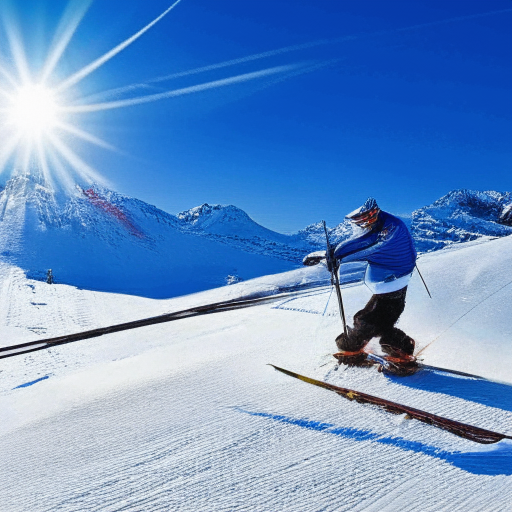Essential Strategies to Protect Your Vision from the Dangers of Snow Blindness
As winter blankets the earth in a stunning display of white, it is crucial to be vigilant about the potential hazards associated with outdoor activities in snowy settings. One of the most pressing concerns is snow blindness, a painful yet temporary condition that occurs due to prolonged exposure to ultraviolet (UV) rays reflected off the snow’s surface. In this thorough guide, we delve into the complex science behind snow blindness, elucidate the visual effects of sunlight on snow, and offer practical tips for prevention, diagnosis, and treatment. By understanding the root causes of this condition and adopting protective measures, we can enjoy the enchanting beauty of winter while safeguarding our eye health.

Comprehensive Overview of Snow Blindness: Medical Definition and Causes
Known medically as photokeratitis, snow blindness manifests as a temporary injury to the cornea, the eye’s outermost protective layer. This distressing condition primarily stems from excessive exposure to high levels of ultraviolet (UV) radiation, particularly those that reflect off snow-covered surfaces. The intensity of sunlight, especially in elevated areas where atmospheric density is lower, can lead to significant discomfort and may result in long-term vision complications in certain scenarios. While snow blindness is typically self-resolving within a short timeframe, understanding its underlying causes is essential for implementing effective strategies for prevention and management.
Understanding the Impact of Sunlight on Snowy Environments and Vision Health
To truly grasp the complexities of snow blindness, it’s important to examine how sunlight interacts with snow’s surface. Sunlight passes through the atmosphere, encompassing a range of wavelengths, including potentially harmful ultraviolet radiation. When these rays hit a snow-covered landscape, snow’s unique reflective properties can bounce back up to 80% of these UV wavelengths, drastically increasing exposure. This reflective effect is particularly pronounced in higher altitudes, where the atmosphere’s ability to filter UV radiation is diminished. Consequently, the eyes can quickly become overwhelmed by excessive UV exposure, which can harm the cornea, conjunctiva, and other vital structures of the eye.
Recognizing the Symptoms of Snow Blindness for Timely Intervention
The symptoms of snow blindness typically manifest several hours after exposure to intense UV light. Although severity can vary among individuals, common indicators include:
Eye discomfort and pain: Many individuals experience a gritty sensation or a feeling akin to having foreign particles in their eyes.
Redness and swelling: The eyes may appear bloodshot, and eyelids can become swollen and inflamed.
Watery eyes: Increased tearing often occurs as the eyes strive to flush out irritants and alleviate discomfort.
Blurry vision: Vision-dependent tasks, such as reading or driving, may become difficult due to distortion.
Sensitivity to light: Increased light sensitivity, known as photophobia, often presents with accompanying headaches.
Sensation of halos: Some may observe bright rings or halos around light sources, causing visual confusion.
Proactive Strategies to Prevent Snow Blindness and Ensure Eye Safety
When it comes to protecting your eyes from the adverse effects of UV radiation, taking preventive measures is far more effective than seeking treatment after the fact. Here are several practical strategies to minimize the risk of snow blindness:
Wear appropriate eyewear: Always opt for sunglasses or goggles that provide 100% UV protection when enjoying snowy environments. Look for eyewear labeled with UV400 or 100% UV protection for optimal safety.
Select wraparound styles: Choose sunglasses or goggles that wrap around the sides of your face, offering comprehensive protection against both direct sunlight and side UV exposure.
Utilize wide-brimmed hats: Hats with wide brims or neck flaps can provide additional shade, significantly decreasing UV radiation exposure to your eyes.
Check the UV Index: Before any outdoor activities, consult the local UV Index, which forecasts daily UV exposure levels. Be cautious about limiting exposure during peak hours, usually from 10 AM to 4 PM.
Apply sunscreen: While it may seem unrelated, applying sunscreen around your face and eyes can significantly reduce UV radiation exposure, enhancing overall protection.
Take breaks indoors: If you plan extended periods in snowy locations, make it a habit to take regular breaks indoors. This practice allows your eyes to rest and recuperate from bright light exposure.
Effective Techniques for Relief and Recovery from Snow Blindness
If you find yourself suffering from the symptoms of snow blindness despite having taken preventive measures, several strategies can help alleviate discomfort and promote recovery:
Seek shade: Immediately retreat to a darkened area or indoors to protect your eyes from further UV exposure.
Remove contact lenses: If you wear contact lenses, take them out to prevent additional irritation and allow your eyes to recover.
Apply cold compresses: Gently placing a cold, damp towel over your closed eyes can effectively soothe discomfort and minimize swelling.
Use artificial tears: Over-the-counter artificial tears can offer temporary relief, keeping your eyes lubricated and alleviating dryness caused by snow blindness.
Avoid bright lights: Limit exposure to bright light sources, including screens and overhead lights, to mitigate the impact of photophobia during recovery.
Rest your eyes: Engage in minimal visual strain activities, avoiding reading or screen time, to provide your eyes with the essential time they need to heal.
When to Seek Professional Medical Assistance for Snow Blindness
In most instances, symptoms of snow blindness will begin to subside within 24 to 48 hours as the cornea heals. However, it is vital to seek medical attention if symptoms worsen or persist, as delays in treatment could lead to complications or secondary infections.
Experiencing snow blindness can significantly hinder your enjoyment of winter activities. Yet, with the right knowledge and precautionary measures, we can substantially reduce the risk while appreciating the beauty of snowy landscapes. Stay informed about UV radiation levels, take frequent breaks in shaded areas, and consistently wear protective eyewear. If you experience any symptoms, seek relief promptly and consult a healthcare professional if necessary. By prioritizing eye safety, you can fully immerse yourself in the winter wonderland and create lasting memories without compromising your vision. Enjoy your winter adventures while staying cautious!
The post Snow Blindness: Understanding Its Causes and Effects appeared first on Survival Bite.
The Article Snow Blindness Causes and Effects Explained Was Found On https://limitsofstrategy.com


This is such a timely topic as winter approaches! I remember a day on the slopes when I underestimated the bright sun reflecting off the snow. It was such a stark reminder of how crucial it is to be aware of UV exposure, even in cold weather. Your breakdown of snow blindness really highlights how easily it can happen, even with just a few hours outside.
You’re so right about that bright sun on the slopes. It’s fascinating how we often associate UV rays with summer, but winter can be just as deceptive. I had a similar experience the first time I went skiing; it was a beautiful, sunny day, but I ended up with a splitting headache from the glare and was definitely feeling the effects of that overexposure.
This post highlights an often overlooked aspect of winter activities. Having experienced snow blindness myself during a long day on the slopes, I can attest to how debilitating it can be. The sheer brightness of snow can be deceiving, and it’s alarming how quickly one can suffer from its effects.
It’s really interesting how we often associate winter fun with activities like skiing or snowboarding without considering the hidden risks, like snow blindness. I remember my first time out in the snow, and despite wearing sunglasses, I ended up with that painful glare. It really drove home the importance of proper eye protection, especially since UV rays can be deceptive in those bright conditions.
It’s so true how often we overlook those hidden risks, like snow blindness, when we dive into winter sports. Your experience really resonates with me. I remember my first day on the slopes too; I had sunglasses on but didn’t realize how much UV rays can reflect off the snow. It felt like a wake-up call not just about eye protection, but also about being mindful of our surroundings in winter activities.
I really appreciate how you highlighted the importance of protecting our eyes during winter activities. It brings back memories of my first snowboarding trip—definitely learned the hard way about snow blindness after feeling that sting on a sunny slope. It’s fascinating how something as beautiful as snow can be so deceptive!